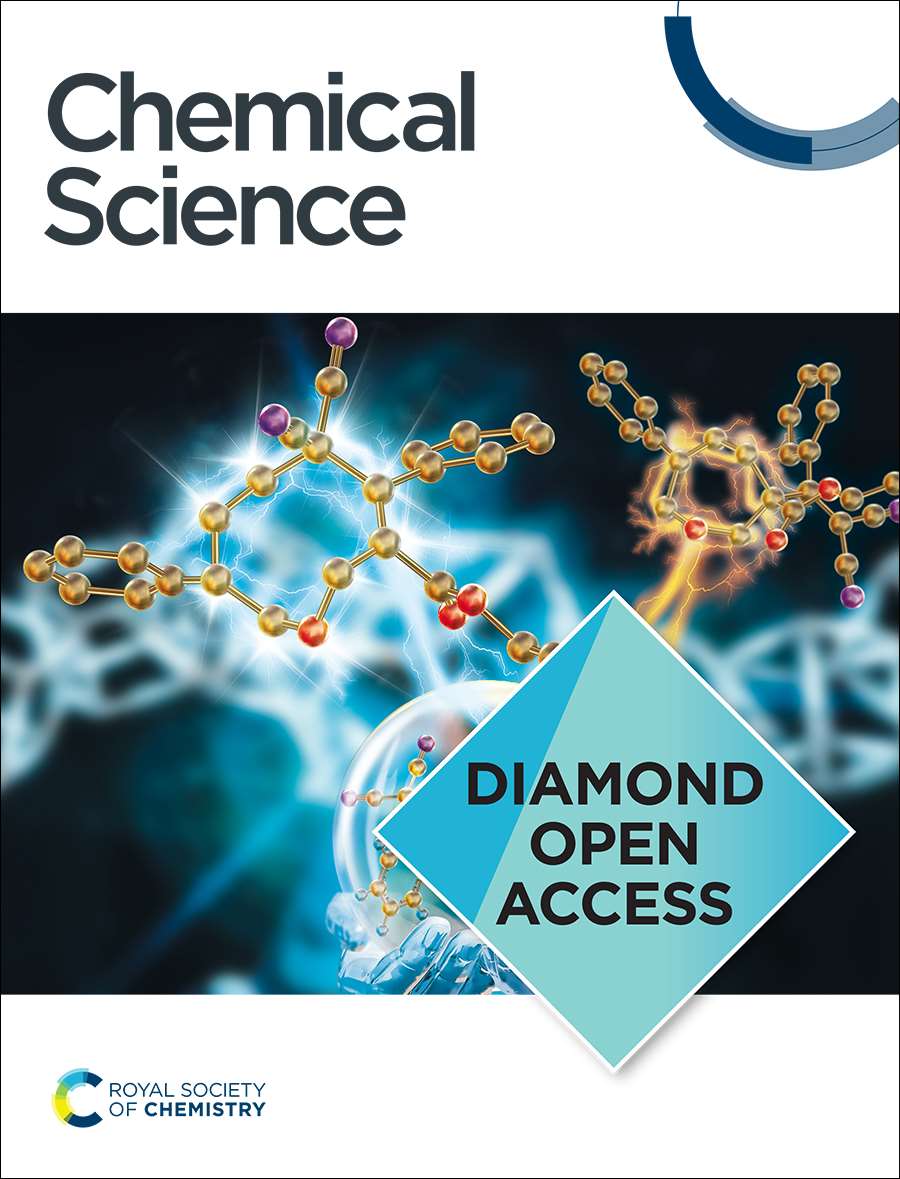利用光子玻璃结构中涌现的多重散射共振进行光电化学能量转换
IF 7.6
1区 化学
Q1 CHEMISTRY, MULTIDISCIPLINARY
引用次数: 0
摘要
在本质上电子输运较差的半导体光电极中,为了提高载流子收集率,通常需要光捕获纳米结构。光子晶体模板可以通过周期性和精确的纳米结构产生可定制的光捕获,尽管这不是光电化学(PEC)应用的可扩展策略。因此,确定能够耐受紊乱的光捕获的替代机制是至关重要的。无序介质中的光捕获是由多次散射引起的扩散输运产生的。在某些情况下,多次散射可以产生类似于在光子晶体中观察到的共振。虽然共振多重散射是一种耐失序的光捕获机制,但目前尚不清楚这种效应是否足够适应,甚至是否对PEC应用有用。在这里,我们描述了一种光子遗漏玻璃,这种纳米结构可以在多次散射输运中可控地诱导共振。我们在无序的SiO2胶体结构上涂上一层TiO2,表征了这些共振的出现,二氧化钛既可以作为介质对比,也可以作为光吸收半导体。我们在有限元模拟和光谱表征中表明,共振多重散射效应改善了结构和体电解质之间界面附近的光捕获。这种效应,加上电化学活性表面积的增加,导致分层结构的TiO2光阳极具有比等效的平面光阳极高几个数量级的光电流,用于PEC反应,如碱性水氧化。研究表明,控制这种共振多重散射效应有利于提高无序光电极中PEC的能量转换。本文章由计算机程序翻译,如有差异,请以英文原文为准。

Harnessing emergent multiple scattering resonances in a photonic glass structure for photoelectrochemical energy conversion
Light trapping nanostructures are often necessary to improve carrier collection yields in semiconductor photoelectrodes with intrinsically poor electron transport. Photonic crystal templates can generate tailorable light trapping via periodic and precise nanostructure, though this is not a scalable strategy for photoelectrochemical (PEC) applications. It is therefore critical to identify alternative mechanisms for light trapping that tolerate disorder. Light trapping in disordered media is generated by the diffusive transport caused by multiple scattering. In some cases, multiple scattering can generate resonances that resemble those observed in photonic crystals. While resonant multiple scattering is a disorder tolerant light trapping mechanism, it is unclear if the effect is sufficiently adaptable, or even useful, for PEC applications. Here, we describe a photonic omission glass, a nanostructure that can controllably induce resonances in multiple scattering transport. We characterized the emergence of these resonances after coating a disordered SiO2 colloidal structure with a layer of TiO2, which functions both as dielectric contrast and as a light absorbing semiconductor. We show in finite element simulations and spectroscopic characterization that the resonant multiple scattering effect improves light trapping near the interface between the structure and the bulk electrolyte. This effect, coupled with the increased electrochemically active surface area, results in a hierarchically structured TiO2 photoanode with orders of magnitude higher photocurrents compared to an equivalent planar photoanode for PEC reactions such as alkaline water oxidation. We show that controlling this resonant multiple scattering effect can be advantageous for improving PEC energy conversion in disordered photoelectrodes.
求助全文
通过发布文献求助,成功后即可免费获取论文全文。
去求助
来源期刊

Chemical Science
CHEMISTRY, MULTIDISCIPLINARY-
CiteScore
14.40
自引率
4.80%
发文量
1352
审稿时长
2.1 months
期刊介绍:
Chemical Science is a journal that encompasses various disciplines within the chemical sciences. Its scope includes publishing ground-breaking research with significant implications for its respective field, as well as appealing to a wider audience in related areas. To be considered for publication, articles must showcase innovative and original advances in their field of study and be presented in a manner that is understandable to scientists from diverse backgrounds. However, the journal generally does not publish highly specialized research.
 求助内容:
求助内容: 应助结果提醒方式:
应助结果提醒方式:


